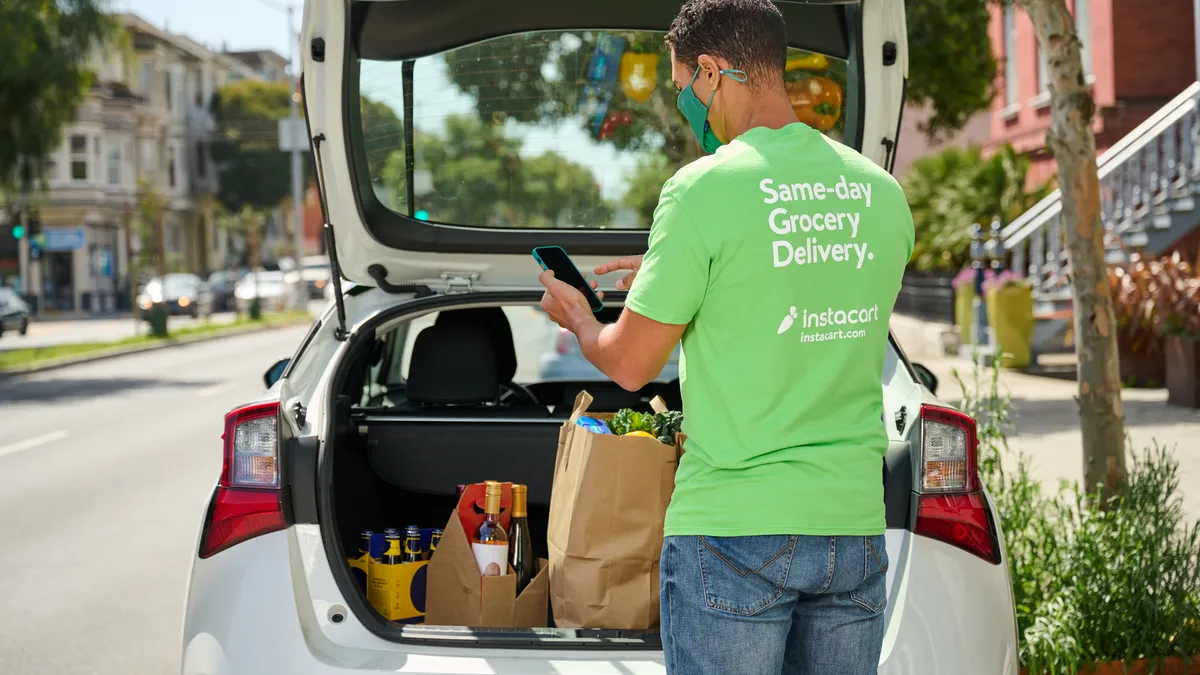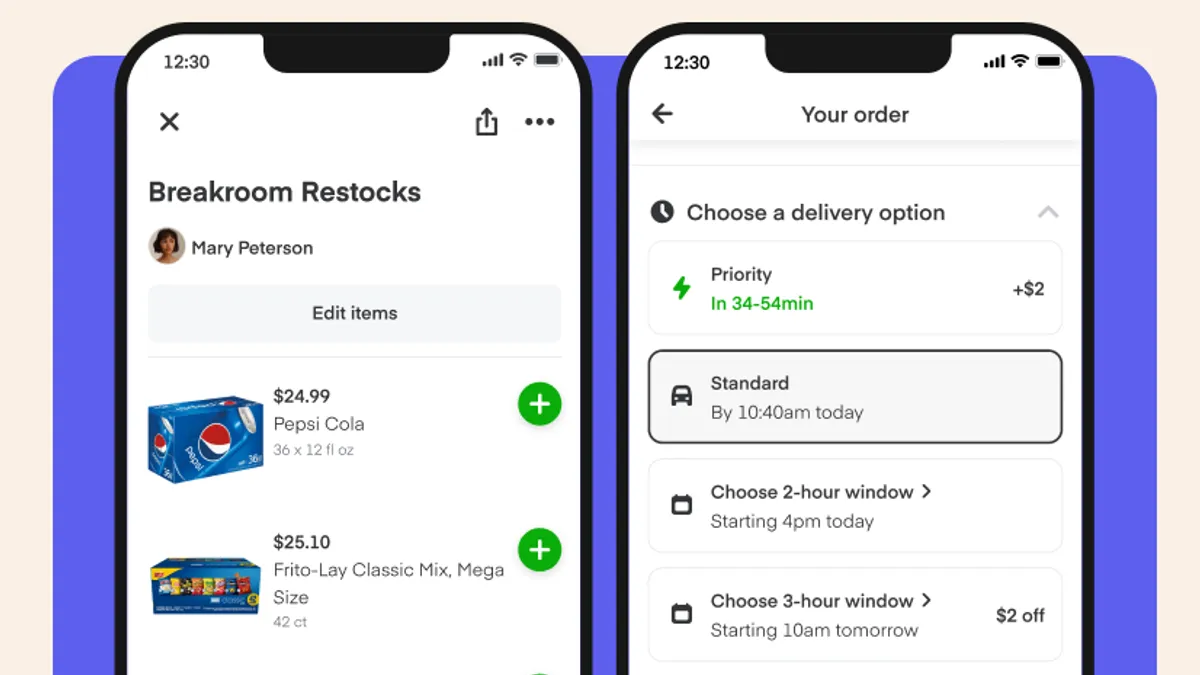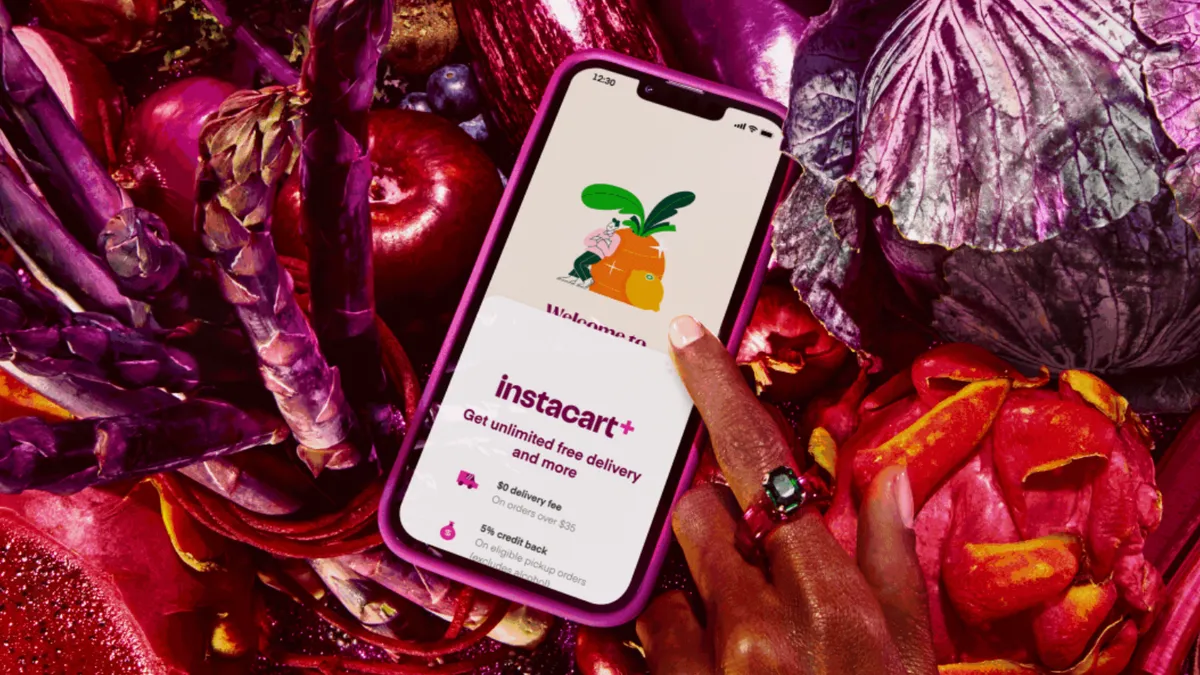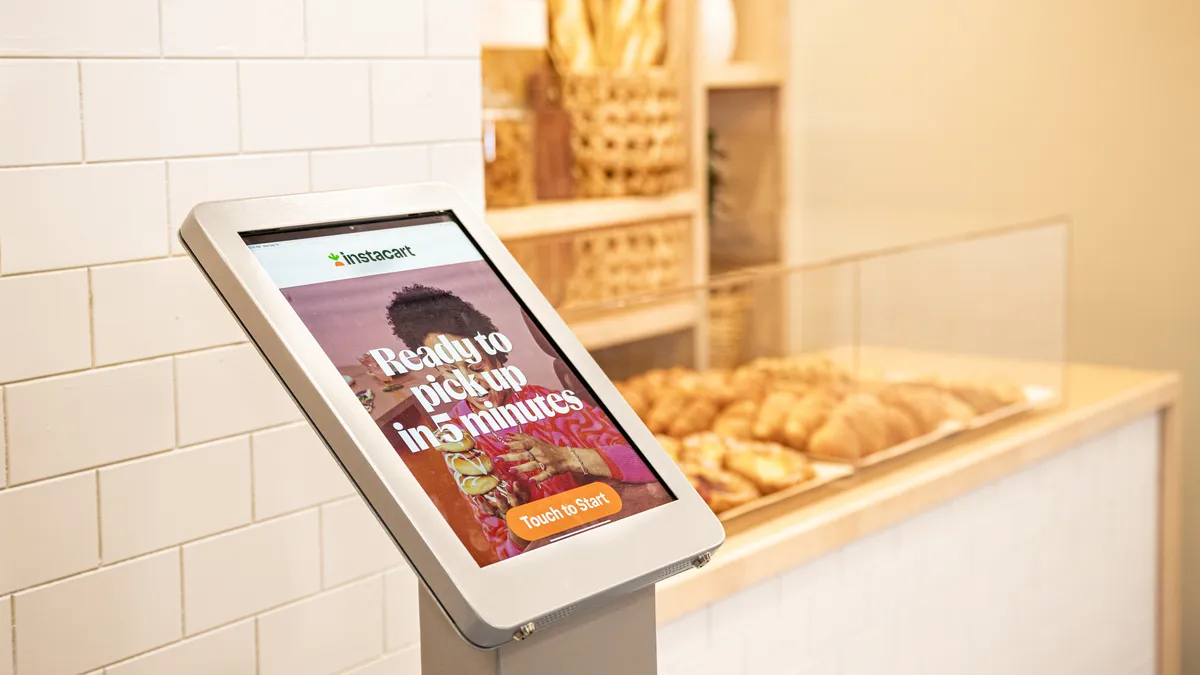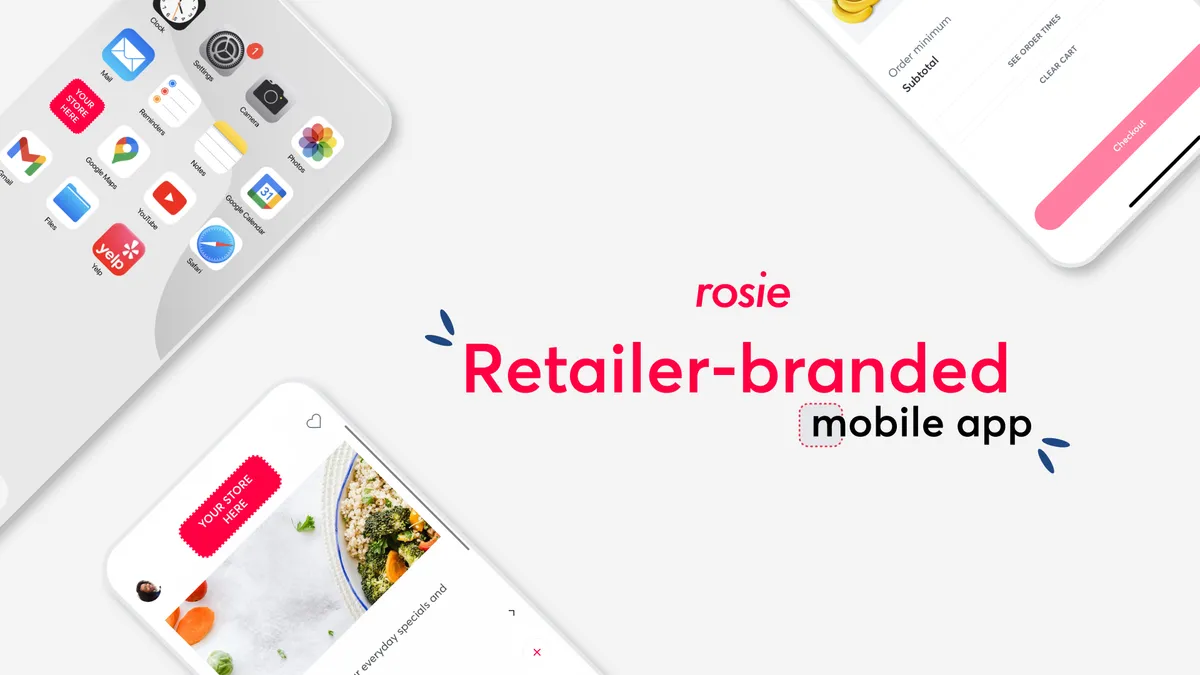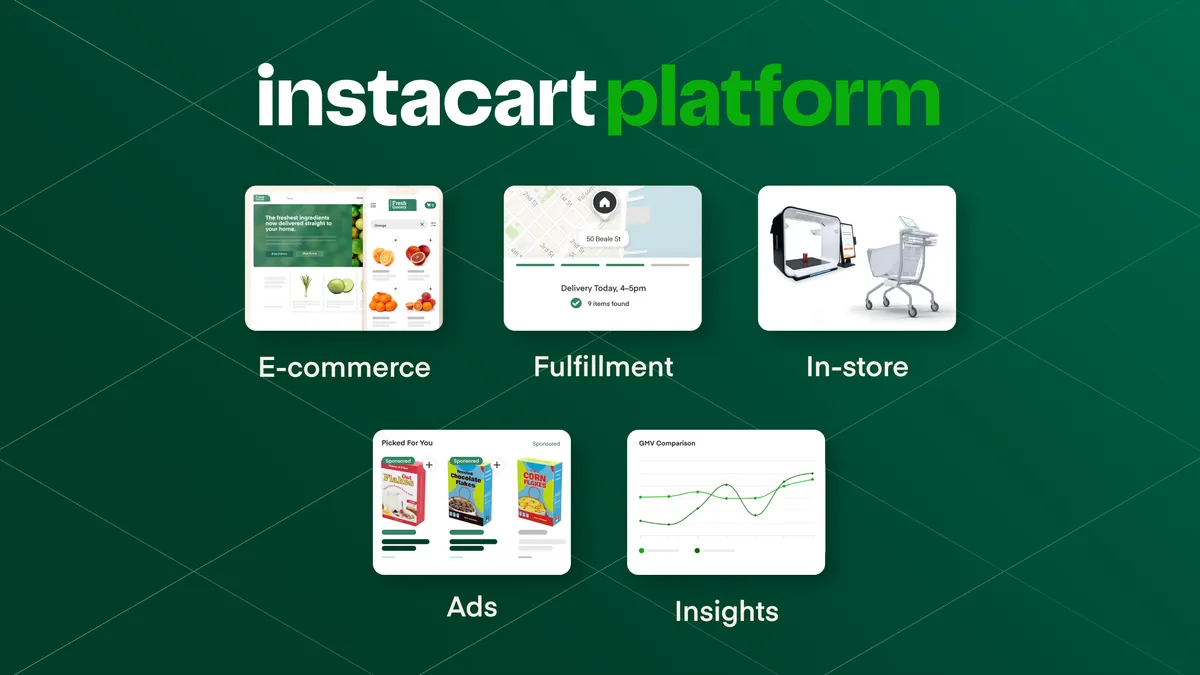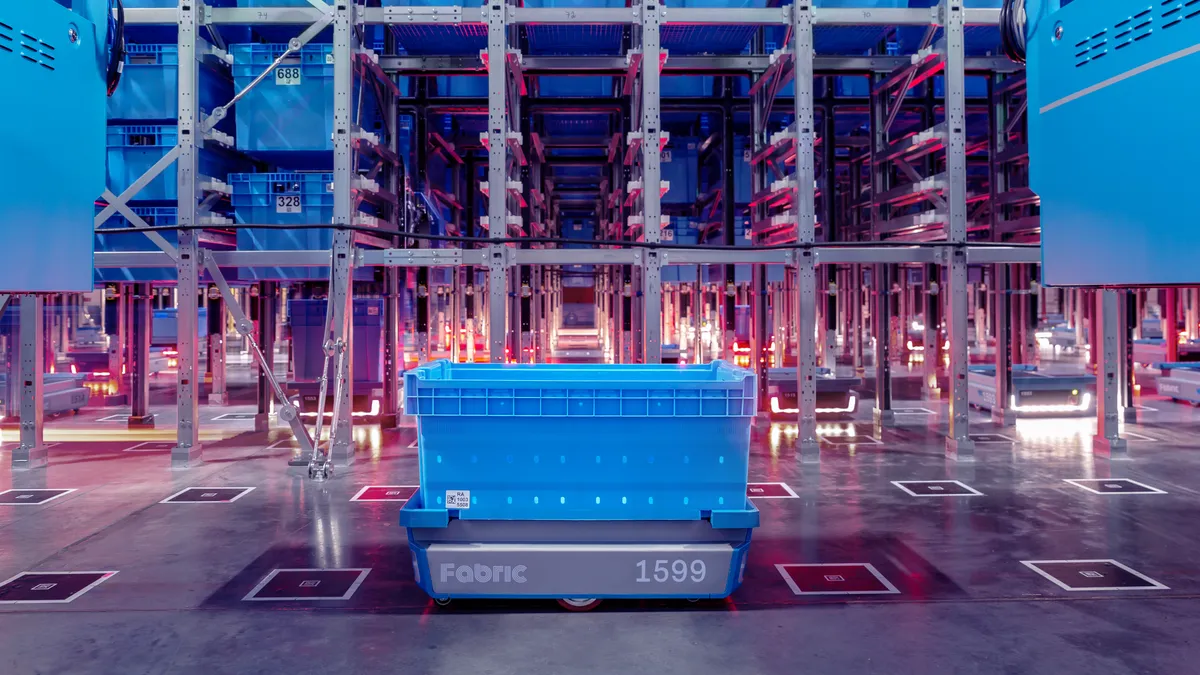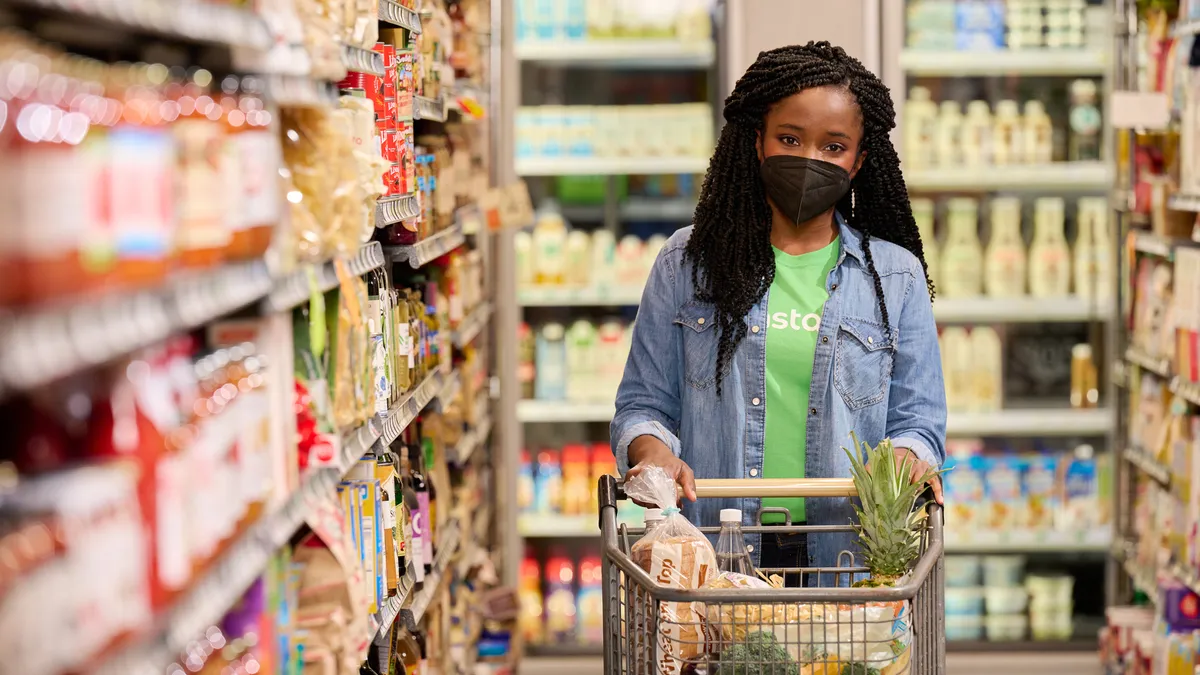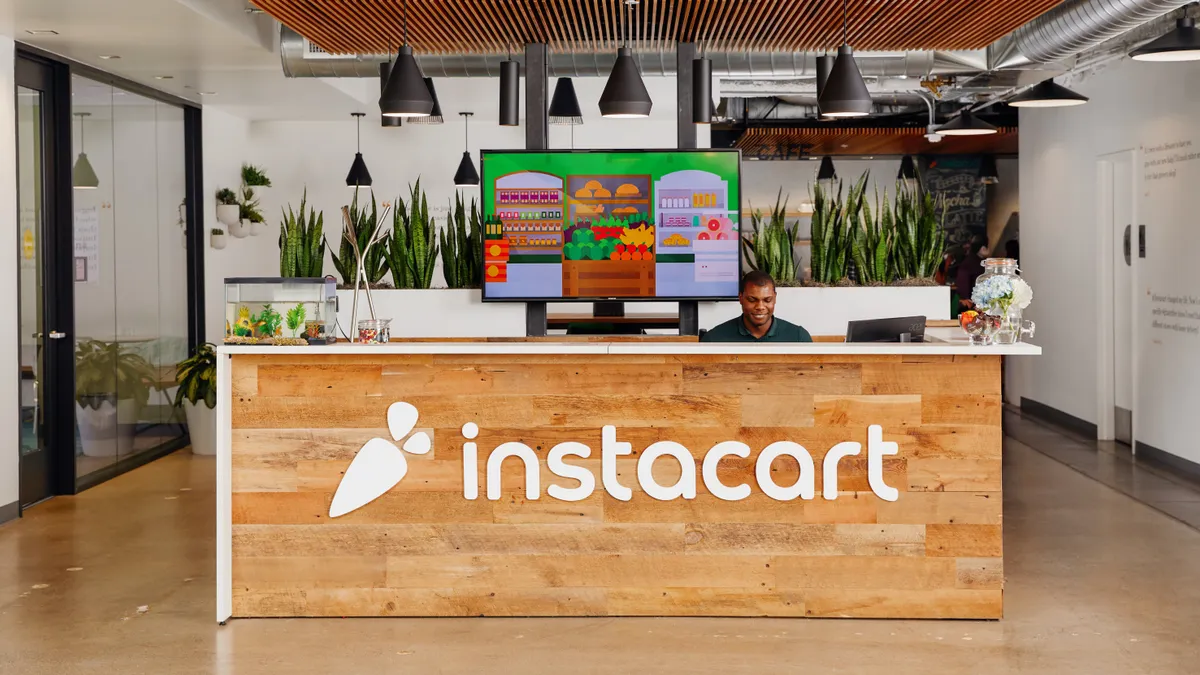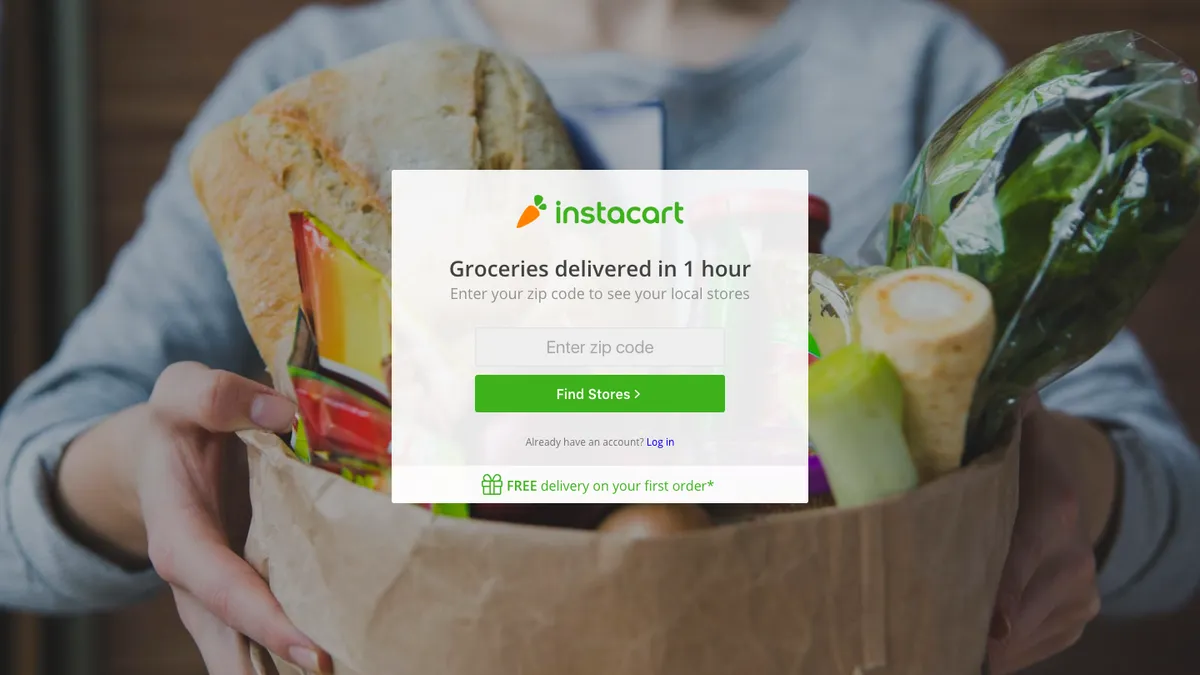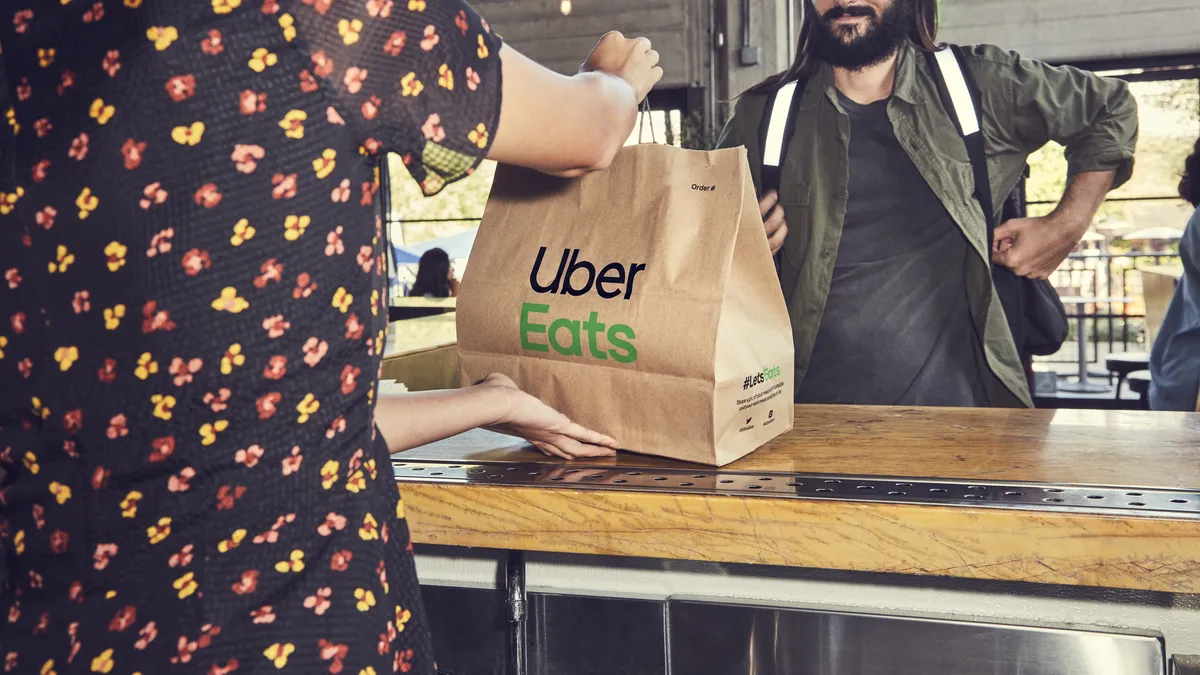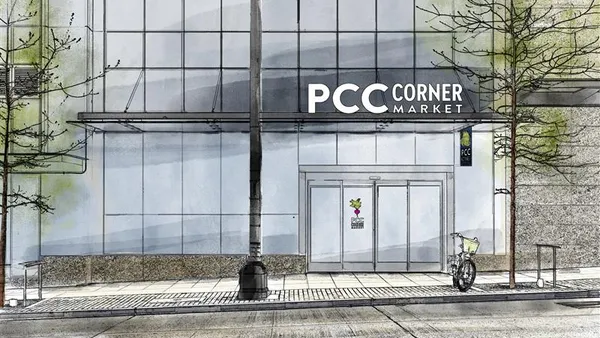Dive Brief:
- Instacart unveiled a brand refresh designed to reflect the evolving nature of the company and match the speedy growth of the grocery delivery landscape, according to a press release.
- The redesign overhauls Instacart's look, with a modernized logo, typography and colors like "kale green" and "guava pink." The grocery delivery service retained its signature carrot logo, but tweaked its appearance to encompass a broader focus on non-grocery items the service delivers, such as cosmetics and office supplies.
- Instacart's rebrand also places a greater emphasis on its retail partnerships, calling attention to partners like CVS and Publix. The visual refresh comes at a time when Instacart continues to roll out features it says will benefit its retail partners, but some experts see tensions, like control of customer relationships, between the company and its partners.
Dive Insight:
As pandemic restrictions again ease and in-person shopping becomes commonplace again, Instacart is looking to hold onto the unprecedented growth it saw during the pandemic's early days. A crowding market of third-party grocery delivery — in addition to retailers' own pickup and delivery services — has placed additional pressure on early entrant Instacart to stand out, especially shortly after a worker strike over low pay in October 2021.
The new logo leans into bolder lettering in a deep green color. Only the top part of the orange carrot is shown, with the fronds done in a lighter green color, made to look like an arrow that allows for flexible usage across channels. Animation is used to show the fronds bouncing through Instacart's available products. Another piece of animated art has the fronds clicking through a series of major brand partners, of which Instacart currently has about 750.
The rebrand follows massive growth for Instacart and the broader grocery delivery market, spurred by the pandemic's onset. Instacart grew by more than $15 billion in 2020. Its dramatic growth put it behind only Amazon in CPG sales growth that year. Now, the potentially waning pandemic may signal a stark slowdown in that growth. However, the pandemic has changed habits for some consumers forever, potentially solidifying delivery's place in the modern grocery landscape as some folks continue to opt for convenient features like pickup and delivery in the long run.
Instacart's visual refresh and broader focus on retail partners and its expanded product offerings arrive as some consider the company's long-term plans. Instacart has maintained its position as a "retail enablement platform" and that it doesn't plan to become a retailer itself. In recent months, the company has launched tools and offerings it said are intended to meet retailer demands.
Its acquisition of smart cart maker Caper last year and work on automated fulfillment service have led some experts to speculate that it's only a matter of time before Instacart cuts out the middleman.
While many retailers jumped to Instacart at the start of the pandemic to bolster their online presence, desires to control more of the e-commerce experience and retain more sales have prompted growing interest in rolling out services like branded delivery and in-house e-commerce operations.









